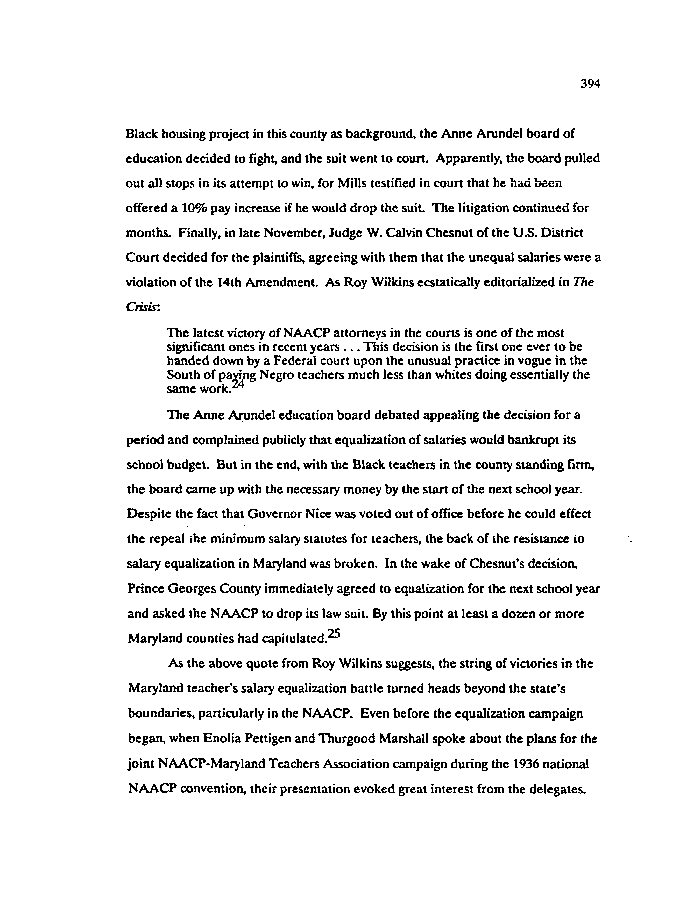|
394
Black housing project in this county as background, the Anne Anindel board of
education decided to fight, and the suit went to court. Apparently, the board pulled
out all stops in its attempt to win, for Mills testified in court that he had been
offered a 10% pay increase if he would drop the suit. The litigation continued for
months. Finally, in late November, Judge W. Calvin Chesnut of the U.S. District
Court decided for the plaintiffs, agreeing with them that the unequal salaries were a
violation of the 14th Amendment. As Roy Wilkins ecstatically editorialized in The
Crisis:
The latest victory of NAACP attorneys in the courts is one of the most
significant ones in recent years ... This decision is the first one ever to be
handed down by a Federal court upon the unusual practice in vogue in the
South of paying Negro teachers much less than whites doing essentially the
same work/'*
The Anne Anindel education board debated appealing the decision for a
period and complained publicly that equalization of salaries would bankrupt its
school budget. But in the end, with the Black teachers in the county standing firm,
the board came up with the necessary money by the start of the next school year.
Despite the fact that Governor Nice was voted out of office before he could effect
the repeal the minimum salary statutes for teachers, the back of the resistance io
salary equalization in Maryland was broken. In the wake of Chesnut's decision,
Prince Georges County immediately agreed to equalization for the next school year
and asked the NAACP to drop its law suit. By this point at least a dozen or more
9*5
Maryland counties had capitulated.
As the above quote from Roy Wilkins suggests, the string of victories in the
Maryland teacher's salary equalization battle turned heads beyond the state's
boundaries, particularly in the NAACP. Even before the equalization campaign
began, when Enolia Pettigen and Thurgood Marshall spoke about the plans for the
joint NAACP-Maryland Teachers Association campaign during the 1936 national
NAACP convention, their presentation evoked great interest from the delegates.
|

